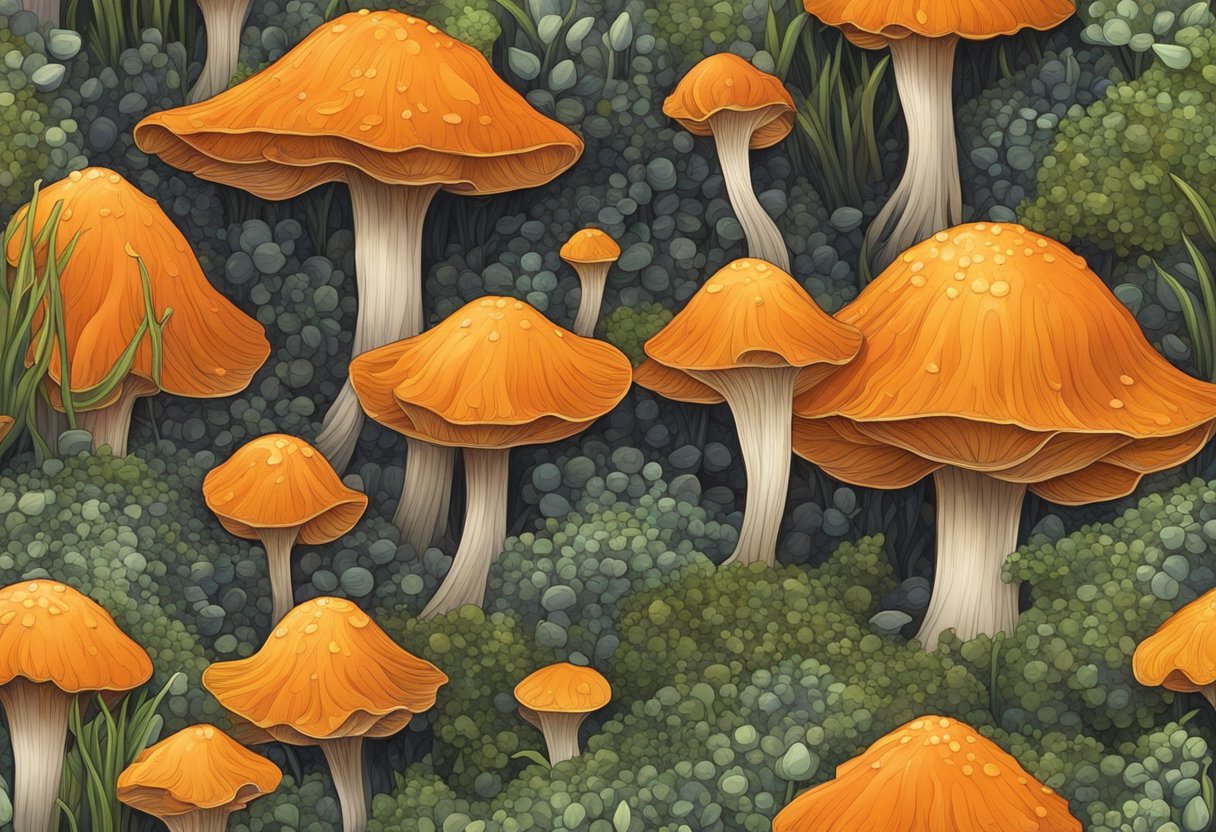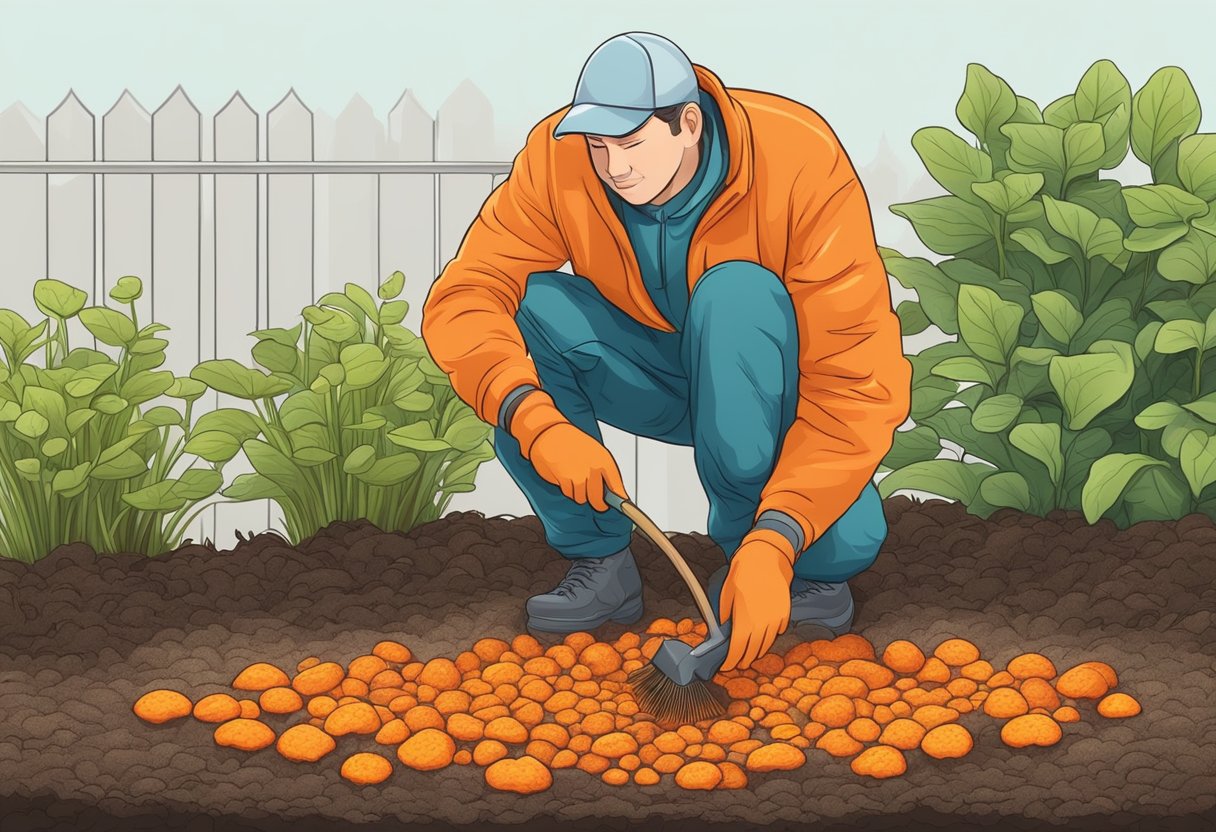When we notice an unusual orange presence in our mulch, we’re often seeing a slime mold, commonly called “orange fungus.” This organism thrives in moist conditions and often appears with warm, wet weather. Though it may be concerning at first glance, it’s important for us to understand that this organism plays a part in breaking down organic matter, thus contributing to the decay process within the mulch. Rather than a true fungus, it’s a single-celled organism that feeds on the bacteria in decomposing plant material.

The encounter with this bright-colored slime mold in our mulch doesn’t require alarm. It’s generally harmless to plants, and its appearance is a sign that our mulch is doing exactly what it’s supposed to do: decompose and enrich the soil. However, we recognize that its appearance can be unsightly in well-manicured gardens. We find that simple measures, like raking the mulch to disrupt the mold’s growth, can help us manage and reduce its presence without the use of chemicals.
At times, other types of mulch fungus may appear, which range in color and form. While they all serve a role in the natural breakdown of organic matter, our goal often revolves around keeping our garden beds looking tidy. We approach this by ensuring proper mulch aeration and maintaining moisture levels that support plant growth without enabling excessive fungal growth. Through these preventative measures, we can maintain the aesthetics of our mulch and, by extension, our gardens.
Identifying Common Fungi in Mulch

In our garden landscapes, identifying fungi growing in mulch is crucial for maintaining a healthy environment. Various types of fungi can appear, each with distinct characteristics and growth patterns.
Types of Mulch Fungi
- Mushrooms: Fruiting bodies of certain fungi which can vary greatly in shape, size, and color.
- Slime Mold: Single-cell organisms that aggregate to form larger structures, often brightly colored.
- Artillery Fungus: Produces small, dark spores that can be problematic due to their tendency to stick to surfaces.
- Stinkhorns: Identified by their foul smell and distinctive shape.
- Bird’s Nest Fungus: Resembling tiny bird nests with ‘eggs’ that are actually packets of spores.
Characteristics of Orange Fungus
- Color: Bright orange, which is very noticeable against the typical brown mulch.
- Scientific Name: Often referred to as Physarum polycephalum.
- Organism Type: A type of slime mold that thrives in warm, wet conditions.
- Spore Production: Does not produce spores in the same manner as mushrooms but spreads by extending its plasmodium.
We find that the orange fungus is not harmful to plants but is part of the decomposition process of mulch, breaking down organic material. It may be unsightly for some gardeners, but it plays a role in the ecosystem of a garden bed.
Prevention and Treatment

To maintain the beauty and health of our gardens, it’s crucial to both prevent fungal outbreaks in mulch and control them if they occur.
Preventive Measures for Fungal Growth
Preventing fungus in mulch begins with choosing the right type of mulch. We often opt for organic mulches like leaf or wood mulch which can decompose and enrich the soil. However, it’s important to keep the mulch dry and not overly thick to avoid creating a habitat for fungi. Regularly aerating the mulch by raking can prevent fungal spores from settling. We also balance the pH and nutrient levels in the soil, applying lime if necessary to discourage fungal growth.
- Choose high-quality organic mulch: Avoid mulches known to harbor fungal spores.
- Maintain dry conditions: Water plants at the base to prevent excessive moisture.
- Aerate the mulch: Keep mulch loose and well-aerated to reduce moisture build-up.
- Monitor pH levels: Maintain a balanced pH to reduce fungal habitat.
Removing and Controlling Fungus
When we encounter fungus in our mulch, our first step is to remove the affected area. Disposing of the infested mulch off-site is crucial to prevent further spread. For persistent problems like artillery fungus, we apply fungicides, but caution is needed as these can affect soil quality and surrounding plant life. Sometimes, non-chemical alternatives such as vinegar, bleach solutions, or baking soda can be effective for less stubborn fungi.
- Remove the infested mulch: Dispose of it to avoid spread.
- Apply fungicides carefully: Use as directed to control persistent fungus without harming the environment.
- Utilize home remedies: Treat minor fungal issues with vinegar or baking soda when appropriate.
By implementing these strategies, we effectively prevent and control fungal growth in our gardens, keeping our outdoor spaces healthy and visually appealing.